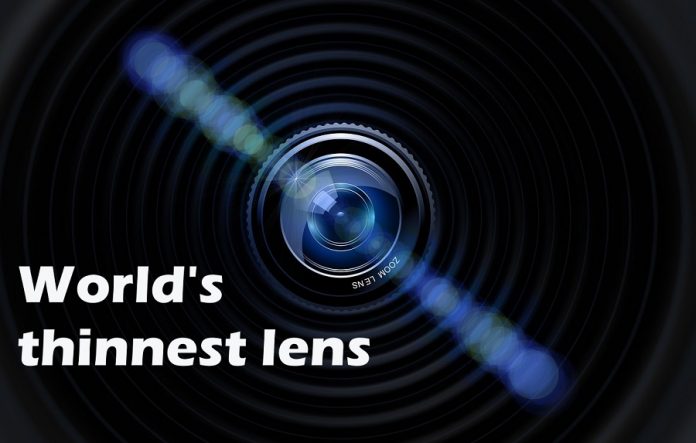For transformation in mini cameras and to start the door to extensible computer displays. Scientists from Australian National University (ANU) have cultivated the world’s thinnest lens. It is just 6.3 nanometres one to a two-thousandth thickness of hair of a human.
How thinnest lens created?
From a class of Chalcogenide glasses, Molybdenum Disulfide is a material that has ductile characteristics of electronics, which make it well-known for high technology components.
A team of Dr Lu’s created their lens from a crystal which is 6.3 nanometres thick with 9 atomic layers, which they had removed a larger molybdenum disulfide piece with clinging tape.
After that, they have developed a 10-micron radius lens, through a pinpoint beam of the ion to cut the layers atom by atom, until they had rounded shape of the lens.
Single layers of Molybdenum Disulphide has a very large optical path length (OPL), around one order of layer of magnitude than that from a graphene single layer.
According to the Dr Lu, leader of Nano-Electro-Mechanical System (NEMS) laboratory in the ANU Research School of Engineering, believes that “this type of material is the absolute nominee for future extensible computer displays.”
He said, “We will also be able to use arrays of microlenses to mimic the compound eyes of insects.”
This is a lubricant, the good semiconductor can endure at high temperature and diffuse photons too.
The capacity of handling the light motion in atomic scale starts a new way towards original miniaturisation of the optical element and the unification of advanced optical functionalities.
The property optical path length controls the light phase and guides interruption and diffusion of light as it reproduced. At the beginning, the team couldn’t imagine why molybdenum disulfide had such surprising properties. Handling light motion at an atomic scale could lead to original miniaturization in making of cameras.
